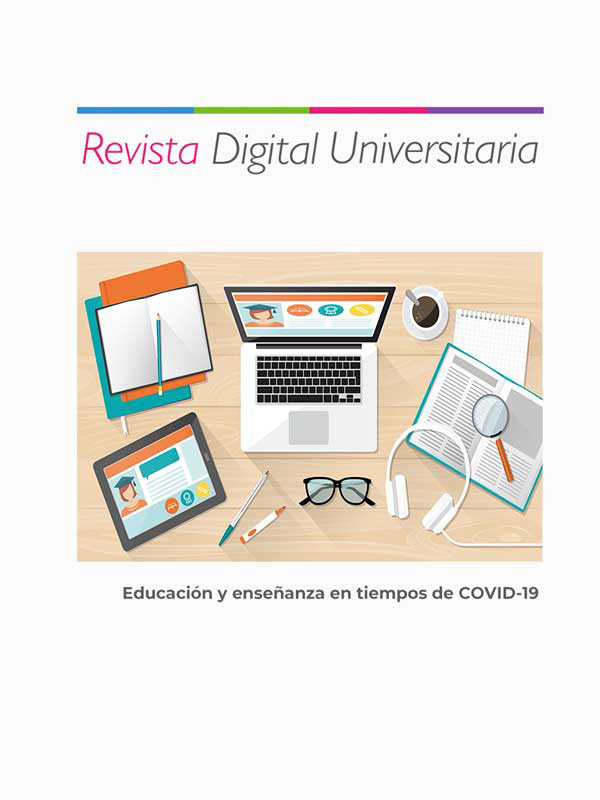The human animal and its behavior in emergencies
DOI:
https://doi.org/10.22201/cuaieed.16076079e.2021.22.1.2Keywords:
social learning, heuristic, imitation, fear, emergencyAbstract
The behavior of human beings, as other animals, is modulated by the social group to which they belong. The grouping of human beings has been an important part of the evolutionary process, increasing their ability to adapt to the environment. However, in societies as broad and complex as the ones today, the group’s own defense systems could become maladaptive. Specifically, social learning and transmission of information in dangerous and uncertain contexts could generate high levels of emotional activation, lack of control of the situation and scarcity of resources. One of the keys to improve group’s response could be to find the point of optimal emotional activation for the population, which avoids both underestimation and overestimation of the dangers associated with the emergency.
References
Bagrow, J. P., Wang, D. y Barabasi, A-L. (2010). Collective response of human populations to large scale emergencies. Plos One, 6(3), e17680. doi: https://doi.org/10.1371/journal.pone.0017680.
Boyd, R. y Richerson, P. (1985). Culture and the evolutionary process. University of Chicago, Chicago.
Cantril, H. (1940). The invasion from Mars: a study in the psychology of panic; with the complete script of the famous Orson Welles broadcast. Princeton University Press.
Cikara, M., Jenkins, A. C., Dufour, N. y Saxe R. (2014). Reduced self-referential neural response during intergroup competition predicts competitor harm. NeuroImage, 96, 36-43. doi: https://doi.org/10.1016/j.neuroimage.2014.03.080.
Fiddyment, P. (2015, 3 de enero). Animals [fotografía]. Flickr. https://flic.kr/p/HFJhiS.
Galef, B. G., Jr. y Whiskin, E. E. (2004). Effects of environmental stability and demonstrator age on social learning of food preferences by young Norway rats. Animal Behaviour, 68(4), 897–902. doi: https://doi.org/10.1016/j.anbehav.2003.10.029.
Grueter, C. y Ratnieks, F. (2011). Honeybee foragers increase the use of waggle dance information when private information becomes unrewarding. Animal behaviour, 81(5), 949-954. doi: https://doi.org/10.1016/j.anbehav.2011.01.014.
Lazarus, R. S. y Folkman, S. (1984). Estrés y procesos cognitivo. Springer Publishing Company.
LeDoux, J. E. (1986). Sensory systems and emotion: a model of affective processing. Integrative Psychiatry, 4, 237-248.
LeDoux, J. E. (2020). My Word. Thoughtful feelings. Current Biology, 30(11), R617-R634. https://www.cns.nyu.edu/ledoux/pdf/thoughtful_feelings_current%20biology_may2020.pdf.
Lefebvre, L. y Palameta, B. (1988). Mechanisms, ecology, and population diffusion of socially learned, food-finding behavior in feral pigeons. En T. R. Zentall y B. G. Galef, Jr. (Eds.), Social learning: Psychological and biological perspectives (p. 141–164). Lawrence Erlbaum Associates, Inc.
Marín Segovia, A. (2012, 1 de marzo). Antonio Marín Segovia. Internet ha sido asesinado por el macarrismo ilustrado de Wert, con el beneplácito del ppsoe [imagen]. Flickr. https://flic.kr/p/bmM8Sj.
Orson Welles – Topic. (2015, 24 de febrero). War Of The Worlds – Original 1938 Radio Broadcasts (2011 Remastered Version) . YouTube. https://youtu.be/9q7tN7MhQ4I.
Pipichas, P. (2007, 5 de mayo). Marciano [fotografía]. Flickr. https://flic.kr/p/Ng2iP.
Riba Cano, D. (2016). Mecanismos cognitivos de aprendizaje social en chimpancés (Pan Troglodytes): Evaluación experimental a través de múltiples tareas [tesis de doctorado, Universitat Rovira i Virgili]. http://hdl.handle.net/10803/399230.
Thorndike, E. L. (1911). Animal intelligence: Experimental Studies. MacMillan.
Tomyn, A. J. (2017). Hadley Cantril: A Pioneer in Public Opinion Research. Applied Research Quality Life, 12, 1033-1034. doi: https://doi.org/10.1007/s11482-017-9569-9.
Tversky, A. y Kahneman D. (1973). Availability: a heuristic for judging frequency and probability. Cognitive Psychology, 5(2), 207–232. doi: https://doi.org/10.1016/0010-0285(73)90033-9.
Webster, M. M. y Laland, K. N. (2008). Social learning strategies and predation risk: minnows copy only when using private information would be costly. Proceedings of the Royal Society B: Biological Sciences, 275, 2869-2876. doi: https://doi.org/10.1098/rspb.2008.0817.
Witte, K. y Allen, M. (2000). A Meta-Analysis of Fear Appeals: Implications for Effective Public Health Campaigns. Health Education & Behavior, 27(5), 591-615. doi: https://doi.org/10.1177/109019810002700506.
Worchel, S., Cooper, J., Goethals, G. R., y Olson, J. M. (2009). Psicología social. Paraninfo.
Published
Issue
Section
License
Copyright (c) 2022 Revista Digital Universitaria

This work is licensed under a Creative Commons Attribution-NonCommercial-ShareAlike 4.0 International License.

Revista Digital Universitaria es editada por la Universidad Nacional Autónoma de México se distribuye bajo una Licencia Creative Commons Atribución-NoComercial 4.0 Internacional. Basada en una obra en http://revista.unam.mx/.










